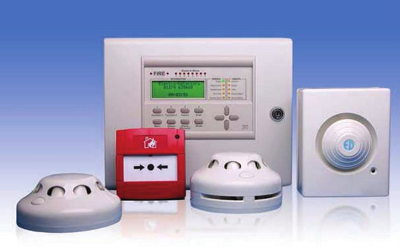How to choose a fire detection system for your premises?

Introduction
Selecting the right fire detection system for your premises is crucial to ensure the safety of occupants and protect property. Fire detection systems come in various types and configurations, each suited for specific environments and needs. Here’s a step-by-step guide to help you choose the appropriate fire detection system for your premises:
1. Conduct a Risk Assessment:
Begin by assessing the fire risks specific to your premises. Consider factors such as the building’s size, layout, occupancy, and the nature of activities conducted within it. Identify potential fire hazards, ignition sources, and any special requirements (e.g., data centers, kitchens, chemical storage areas).
2. Understand Types of Fire Detection Systems:
Familiarize yourself with the different types of fire detection systems available:
a. Smoke Detectors: These are the most common type of detectors. They respond to the presence of smoke particles in the air.
b. Heat Detectors: Heat detectors trigger an alarm when a specific temperature threshold is exceeded. They are suitable for areas where smoke detectors may generate false alarms, such as kitchens or garages.
c. Flame Detectors: Flame detectors are designed to sense the presence of flames. They are often used in areas with open flames or where smoke detection is challenging.
d. Gas Detectors: These detect the presence of specific gases, such as carbon monoxide or methane, which can indicate a fire or hazardous condition.
3. Choose the Appropriate System:
Based on your risk assessment and the nature of your premises, select the most suitable fire detection system or a combination of systems. For example, a typical commercial building may require a combination of smoke detectors and heat detectors.
4. Consider Zoning:
Divide your premises into zones, each with its own detection system. This helps pinpoint the location of a fire quickly, allowing for a faster response. Zones should correspond to the layout and occupancy of your building.
5. Address False Alarms:
False alarms can be costly and disruptive. Choose detectors that are less prone to false alarms in areas where they are essential. For example, use heat detectors in kitchens to reduce false alarms caused by cooking activities.
6. Integrate with Fire Alarm System:
Fire detection systems should be integrated with a fire alarm system. When a detector senses a fire or smoke, it should trigger the alarm system to alert occupants and initiate the appropriate response, such as activating sprinklers or notifying emergency services.
7. Consider Monitoring and Notification:
Decide whether you want a monitored system. Monitored systems connect to a central monitoring station, which can dispatch emergency responders automatically when an alarm is triggered. Non-monitored systems may require someone on-site to respond to alarms.
8. Budget and Maintenance:
Consider your budget for the initial installation and ongoing maintenance. Regular testing and maintenance are crucial to ensure the reliability of your fire detection system.
9. Compliance with Codes and Regulations:
Ensure that your chosen fire detection system complies with local building codes and regulations. Compliance is not only a legal requirement but also essential for the safety of your premises and occupants.
10. Consult with Experts:
If you are unsure about which fire detection system is best for your premises, consult with fire safety professionals or contractors experienced in fire detection systems. They can provide valuable insights and recommendations based on your specific needs.
Conclusion
In conclusion, selecting the right fire detection system for your premises requires a thorough understanding of your facility’s unique requirements and the various types of detection systems available. Taking the time to assess your risks and consult with experts will help you make an informed decision that ensures the safety of your premises and its occupants.